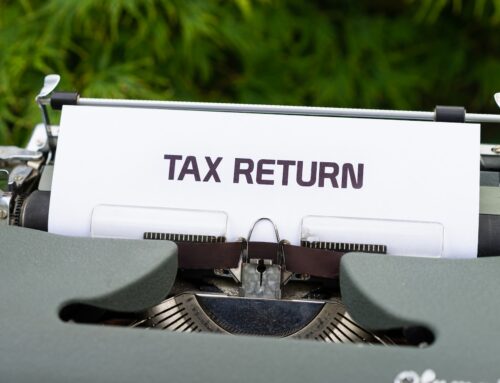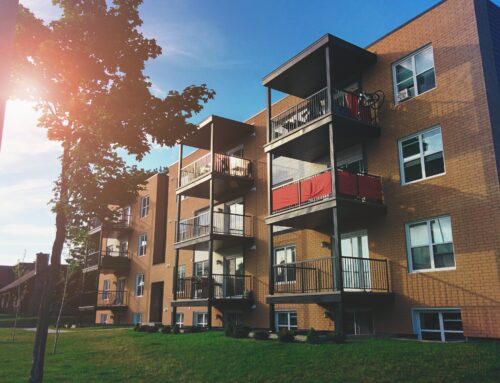Intro:
If you’re planning to move to Montreal, one of the first things you’ll want to familiarize yourself with is the city’s efficient public transportation system, the Montreal Metro. This subway network is not only the lifeblood of the city but also an essential tool for exploring Montreal’s vibrant neighborhoods, cultural gems, and diverse attractions. As you prepare for your exciting move to this dynamic city, understanding its public transportation system is essential for navigating the bustling urban landscape. The Montreal subway, a key component of the city’s transit network, will be your reliable companion as you explore its neighborhoods, historic sites, and cultural hotspots. In this comprehensive guide, we’ll walk you through the ins and outs of the Montreal transit system, ensuring you’re well-equipped to embrace city life with confidence.
For first time riders, understanding the Montreal Metro can be broken down into ten easy to follow steps:
Knowing the Lines:
The Montreal subway system consists of four distinct lines, each color-coded for easy identification: the Green Line (Line 1), Orange Line (Line 2), Blue Line (Line 5), and Yellow Line (Line 4). These lines traverse the city, connecting various neighborhoods, cultural attractions, and economic hubs. The Green Line, often considered the backbone of the system, runs from Angrignon in the southwest to Honoré-Beaugrand in the northeast, passing through the city’s downtown core. The Orange Line stretches from Montmorency in the north to Côte-Vertu in the west, making it one of the busiest lines with essential stops like Berri-UQAM, which allows for connection to other lines. The Blue Line, with its eastern terminus at Saint-Michel and western endpoint at Snowdon, serves neighborhoods in the eastern and western parts of the island. The Yellow Line, a shorter but crucial addition, connects the island of Montreal to the South Shore, running from Longueuil to Berri-UQAM. Each line offers unique experiences and access to various facets of Montreal’s rich cultural tapestry.
Acquiring Tickets or Cards:
Acquiring tickets and cards for the Montreal subway system is a straightforward process designed for the convenience of commuters and visitors alike. The most commonly used payment method is the OPUS card, a reusable smart card that can be loaded with various types of fares. You can purchase an OPUS card at metro stations, local convenience stores, or online, making it easily accessible to all. For those planning to use the metro infrequently, single-ride tickets are available for purchase from automated ticket vending machines at the stations. These tickets are also valid for bus rides within the same fare zone, offering flexibility for multi-modal transportation. With a variety of payment options and the widespread availability of OPUS cards, accessing Montreal’s Metro system is both user-friendly and efficient.
Understanding the Fare Zones:
Understanding the Montreal transit system’s fare zones is essential for planning your commute effectively. Montreal’s public transportation network is divided into several fare zones, with Zone 1 covering the city itself. However, if your travels extend beyond Montreal’s boundaries to neighboring suburbs or regions, you may need to purchase a fare that covers additional zones. These zones are clearly demarcated on transit maps and fare charts, allowing you to select the appropriate ticket or OPUS card for your journey. Ensuring you have the correct fare, especially when venturing outside Zone 1, ensures a smooth and hassle-free metro experience, with fares adjusted to accommodate the distance traveled.
Planning Your Route:
Planning your route on the Montreal transit system is a straightforward process designed to make your commute hassle-free. To begin, identify your starting station and your destination on the metro map, which clearly displays each station’s name and the color-coded lines that connect them. Next, consult the metro schedule to determine the frequency and availability of trains during your planned journey. Montreal also offers online trip planning tools and smartphone apps that provide real-time schedules, route maps, and service updates, allowing you to plan your route with precision and efficiency. Whether you’re a newcomer to the city or a seasoned Montrealer, these resources ensure you can navigate the Montreal subway system confidently and reach your destination with ease.
Boarding the Train:
Once you’ve arrived at the platform of your chosen station, keep an eye out for electronic displays and audio announcements that indicate the next arriving train and its destination. As the train pulls into the station, stand behind the designated yellow line on the platform until the train comes to a complete stop and the doors open. Once the doors open, feel free to enter the train. During peak hours, it’s advisable to allow passengers to disembark first before boarding to ensure a smooth flow of commuters.
Inside the Metro:
Riding inside a Montreal Metro car offers a comfortable and efficient way to navigate the city. Passengers can expect a clean and well-maintained interior with overhead displays and audio announcements providing continuous updates about the next station and relevant information. Seats are available for those who prefer to sit, but during busy hours, many commuters choose to stand to accommodate fellow passengers. Commuters are generally respectful, and you’ll find the atmosphere inside the cars on the Montreal transit to be calm and orderly. As you travel through the underground tunnels, you’ll have the opportunity to glimpse the diverse neighborhoods and unique cultural sights that make Montreal a captivating city to explore. Whether you’re on a short commute or a more extended journey, the Montreal subway system offers a reliable and efficient means of transportation to reach your destination with ease.
Transfers and Connections:
Transfers and connections on the Montreal subway system are seamlessly integrated into the network, making it easy to navigate the city and reach your desired destinations. Major transfer stations like Berri-UQAM and Lionel-Groulx serve as central hubs where multiple metro lines intersect. Here, you can efficiently switch between different lines, ensuring that you can access various parts of Montreal without hassle. Signs and directions within stations are clear and well-marked, making it simple to find your way to connecting platforms. This interconnectedness allows you to explore Montreal’s diverse neighbourhoods, cultural attractions, and economic centers effortlessly.
Exiting the Metro:
Exiting a train on the Montreal transit system is a straightforward process designed to ensure a smooth flow of passengers. As the train approaches your desired station, prepare to disembark by standing near the doors. Once the doors are open, exit the train promptly and follow the signs within the station to reach the platform or connecting services if needed. Being considerate of your fellow commuters and allowing them to disembark before boarding ensures an efficient and courteous experience for everyone using the Montreal Metro.
Accessibility and Amenities:
The Montreal subway system prioritizes accessibility and passenger comfort. Many stations are equipped with elevators, escalators, and ramps to accommodate passengers with mobility challenges, ensuring that everyone can access the metro network. Additionally, restrooms are available at some stations for passengers’ convenience. The Montreal Metro is also known for its public art installations, which can be found at various stations, adding a touch of culture and creativity to the commuting experience. Some stations offer Wi-Fi access and cellular coverage, allowing passengers to stay connected during their journey. The Montreal Metro is a welcoming and inclusive mode of transportation for all passengers.
Safety and Security:
Safety and security on the Montreal transit system are paramount, ensuring passengers can travel with peace of mind. While the Metro is generally considered safe, it’s essential to remain vigilant, particularly during late hours. The stations are equipped with security personnel and surveillance cameras to monitor activity and respond to any emergencies promptly. Passengers are encouraged to report any concerns or suspicious behavior to metro staff or transit authorities. Additionally, Montreal transit cars are equipped with emergency intercoms, allowing passengers to communicate directly with metro personnel in case of need. By following basic safety practices, such as keeping belongings secure and respecting priority seating, passengers can contribute to a safe and comfortable commuting experience for themselves and others.
The Future of the Montreal Metro System:
The future of the Montreal transit system looks promising with exciting developments on the horizon. The Réseau express métropolitain (REM), a new automated light rail network, is set to transform the city’s transit landscape. Once completed, the REM will connect Montreal with its suburbs, significantly expanding the reach of the public transportation network and reducing congestion on city streets. With phase one of three already completed, residents from outside of the central metropolitan area now have access to a quick and reliable form of public transportation. Additionally, the proposed Pink Line (Line 6) of the Montreal subway system is an ambitious project that aims to enhance connectivity within the city, providing residents and visitors with even more convenient transit options. These upcoming developments underscore Montreal’s commitment to sustainable urban development, promising a brighter, more efficient future for transportation in the city and further solidifying its reputation as a forward-thinking metropolis.







Leave A Comment